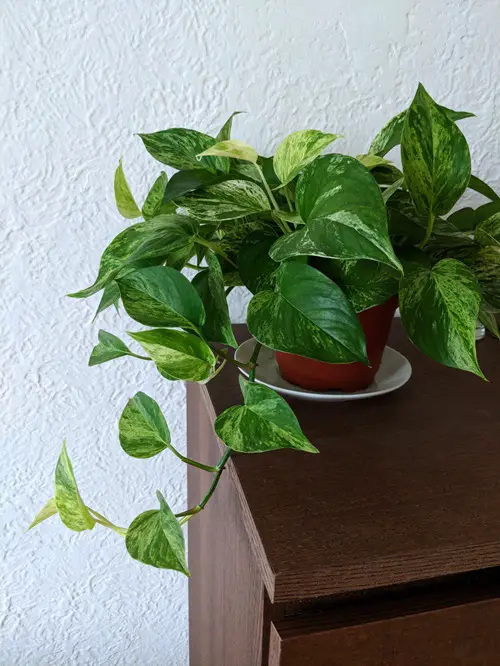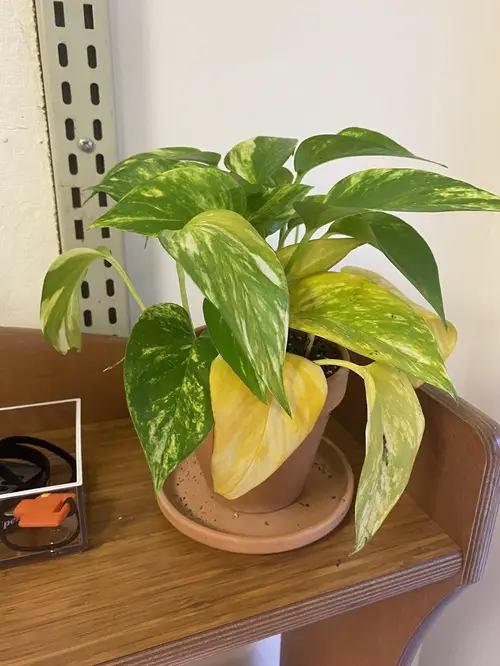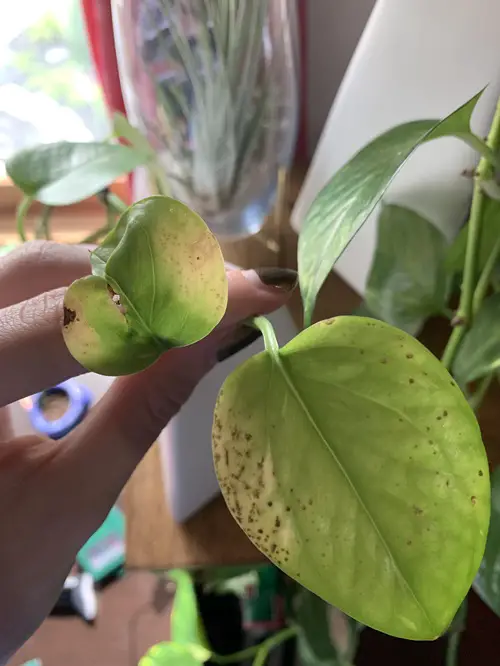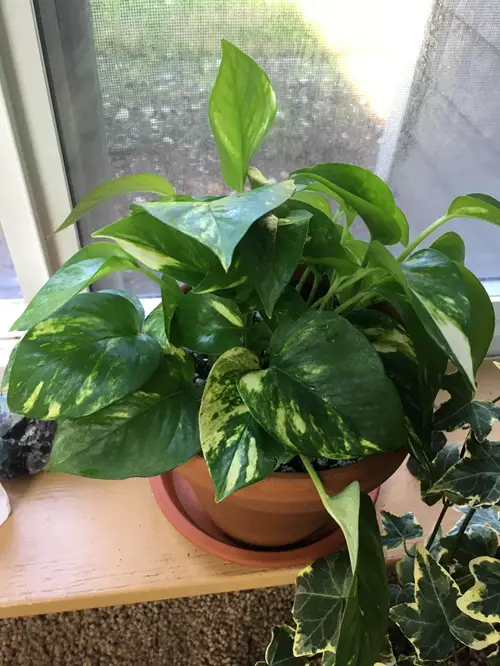End the struggle that you face while dealing with the Most Common Pothos Plant Problems with Their Solutions in this guide.

Pothos plants are popular for their lush growth and low-maintenance nature. This houseplant is quite hardy and can flourish in a range of conditions; these traits make the gardeners careless about pothos, and they ignore signs that indicate the plant is in trouble. This article will focus on the Most Common Pothos Plant Problems and Their Solutions and keep you in check.
Most Common Pothos Plant Problems and Their Solutions
1. Curling or Wilting Foliage
Curling or wilting leaves are the problems that appear due to the lack of moisture. Water the plant when the topsoil dries out to a few inches. Always check the soil moisture before watering; insert a finger in the soil. If it comes dry, it is time to water the plant.
Sometimes, wilting is also a sign of overwatering, which causes root rot and results in wilt.
Direct sunlight can also cause the foliage to curl inwards, so choose a spot where pothos receive bright, indirect light.
Apart from the above reasons, pothos leaves curl can be a result of dry air in your home as this plant enjoys moderate humidity. In such conditions, increase humidity by placing the pot on a tray filled with water and pebbles.
2. Pothos Leaves Turning Yellow
Many reasons make Pothos leaves turn yellow. Certain varieties, like the Neon Pothos, produce bright chartreuse leaves, or the Golden Pothos, with yellow variegation, naturally have yellow hues. However, if the yellowing isn’t part of the plant’s normal coloration, it might be due to improper watering.
Over-watering often results in yellow leaves that are soggy and limp, in which case you should let the plant and soil dry out. Conversely, if the yellow leaves are dry, crispy, and brittle, under-watering is probably the cause, and the plant needs a thorough watering.
Old or mature foliage may also turn yellow and die. Gently remove these leaves from the plant. Pests and fungal diseases are other reasons for yellow foliage. Lastly, yellow foliage can be a sign of nutrient deficiency. Though pothos are not heavy feeders, you can apply an NPK ratio of 3-1-2 granular or liquid fertilizer during spring and summer.
3. Brown Tips
If you notice brown tips on the plant leaves, then it is due to a lack of humidity and underwatering.
Water the plant when the top 1-2 inches of the soil dries out. However, avoid overwatering. Always use room-temperature water.
The required humidity for pothos has to be above 40%. In the absence of adequate humidity, place the pot on a tray filled with water and pebbles. You can also group plants together or invest in a humidifier.
Excessive nutrient salts in the soil, which often result from over-fertilization, can lead to the browning of the leaves of pothos houseplants. This condition typically manifests as browning at the tips, edges, and sometimes across the entire leaf blade. Always feed the plant in spring and summer with an NPK ratio of 3-1-2 of balanced liquid fertilizer.
Read about Reasons for Brown Tips on Indoor Plants + Solutions
4. Brown Spots

This problem occurs due to direct sunlight. This tropical plant thrives in dappled sunlight in their natural habitats. For lush green leaves, keep the plant where they get bright, indirect light.
One more reason for brown spots on the foliage is diseases such as Bacterial wilt or Southern Blight that cause brown spots. Prune the affected foliage and stems so it does not spread.
Strong does of pesticides or insecticidal soaps can also cause brown spots on the pothos. To avoid this issue, use these measures in a moderate amount as suggested on the label.
5. Spots on the Foliage

Yellow, brown, or black spots on the pothos can be an issue that indicates a pest problem. Mealybugs, aphids, thrips, and spider mites can feed on the leaves and stems.
You can use insecticidal soap or horticultural oil to solve this issue. After getting rid of pests, prune the damaged foliage to encourage healthy growth.
Overwatering and fungal infections such as Anthracnose and Cercospora lead to black spots on the pothos leaves.
To avoid this issue, water the plant when the topsoil becomes dry up to 1-inches. For handling fungal issues, spray the affected parts with baking soda and liquid soap solution. If infestation is severe, then use a copper-based fungicide as per labeled instructions.
6. Stunted Growth
There are several reasons behind this issue, one of which is rootbound. Pothos can grow in a small pot for years, and when you notice roots appearing above the soil line and coming out from the drainage holes, then it is time to repot the plant in a one-size bigger container with drainage holes. Use fresh soil for repotting.
Insufficient light can also contribute to stunted growth of the plant. Place the pot in a bright area.
Another reason for this problem can be a lack of nutrients; apply a balanced liquid fertilizer in spring and summer.
7. Lack of Variegation
Pothos are popular for their variegated leaves, but it is not stable, and foliage becomes green in the absence of sufficient sunlight.
In low-light conditions, the plant produces more chlorophyll to compose for the lack of photosynthesis, making the variegated parts green again.
When leaves lose variegation, place the plant in a bright area.
You also apply a handful of bone meal (a rich source of phosphorus) to the soil during the growing season to promote variegated leaves. Read more about ways to increase coloration and variation in the pothos plant in this post.




